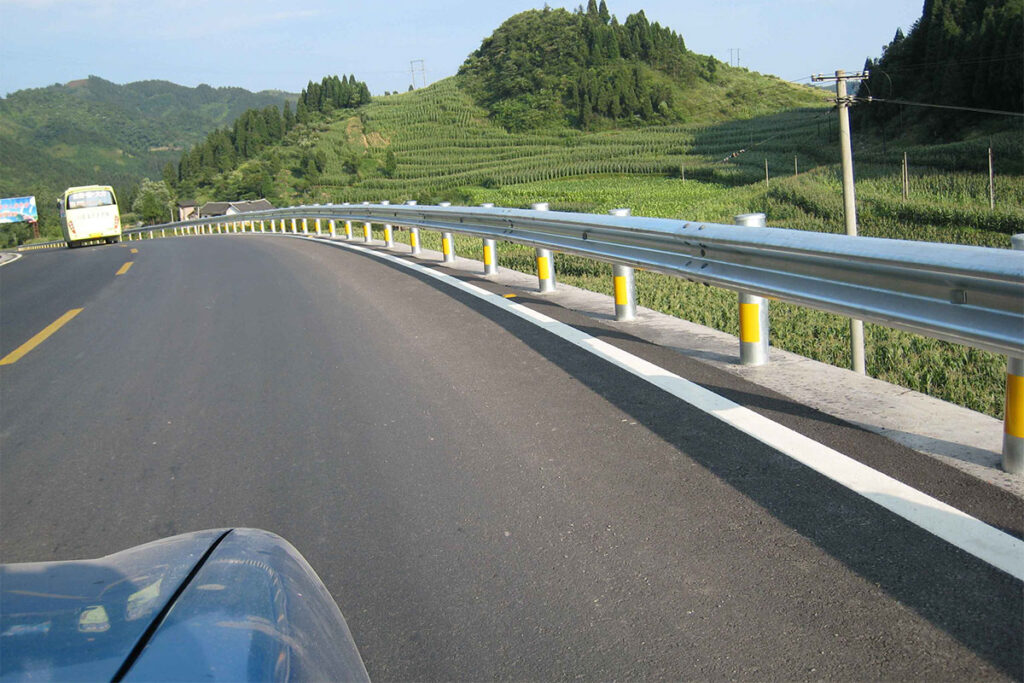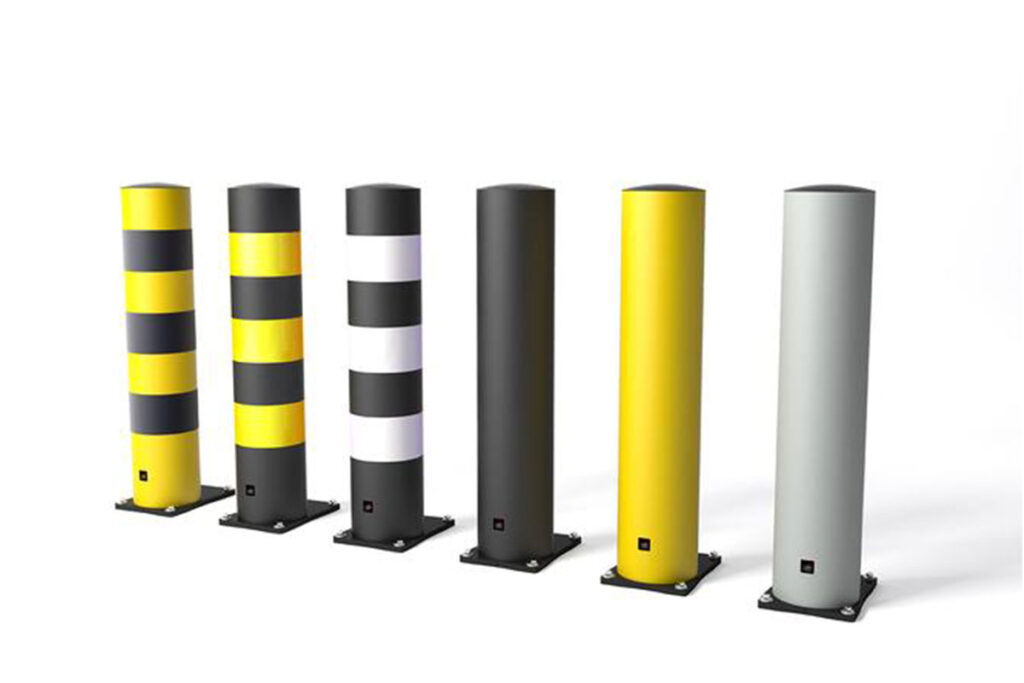Guardrail vs Bollards: What’s The Difference?
Guardrails and bollards are two common safety features used in a wide range of settings, including roadways, parking lots, and industrial facilities. Both serve the essential purpose of providing protection and safety to people and property, but they are different in several ways.

Guardrails: Overview and Applications
Guardrails are physical barriers designed to prevent vehicles, pedestrians, or other objects from straying into dangerous or restricted areas. They are commonly found along highways, bridges, and other areas where there is a risk of a vehicle running off the road or into a pedestrian area. Guardrails can be made from various materials, including concrete, steel, and wood, and they come in various shapes and sizes depending on the application.
The primary purpose of guardrails is to redirect or contain a vehicle that has left the roadway, preventing it from crashing into other vehicles, pedestrians, or buildings. They are also used to prevent people from accessing restricted areas or falling from elevated platforms. For example, in industrial settings, guardrails are commonly used to protect workers from dangerous machinery or equipment.
Types of Guardrails
Guardrails come in different types, depending on their application and location. The most common types include:
- W-beam Guardrails: They are the most common type of guardrail used on highways and roads. They are made of steel and have a W-shaped cross-section that provides strength and flexibility in absorbing impacts. W-beam guardrails are effective in redirecting vehicles and preventing them from leaving the road or crossing into opposing traffic lanes.
- Cable Guardrails: They use high-tension cables instead of solid barriers to redirect vehicles. They are commonly used on bridges and other areas where there is a risk of vehicles leaving the roadway. Cable guardrails are less intrusive than other types of guardrails and offer good visibility.
- Concrete Barriers: They are heavy, rigid barriers that are effective in containing vehicles and preventing them from leaving the roadway. They are commonly used in high-speed areas such as highways and interstates. Concrete barriers are durable and require minimal maintenance, making them an ideal choice for long-term applications.
Bollards: Overview and Applications

Bollards are short, sturdy posts made of concrete, steel, or other materials. They are commonly used to protect buildings, pedestrians, and other structures from vehicles. Bollards can be fixed or removable, and they come in various shapes and sizes depending on the application.
The primary purpose of bollards is to provide physical protection against vehicles. They are commonly used in areas where there is a high risk of a vehicle accidentally or intentionally ramming into a building or other structure. For example, bollards are commonly used around government buildings, commercial properties, and sports stadiums.
Types of Bollards
Bollards come in different types, depending on their application and location. The most common types include:
- Fixed Bollards: They are permanently installed and cannot be removed. They are commonly used in high-security areas such as government buildings, airports, and military installations. Fixed bollards are designed to withstand high-impact collisions and are an effective way to protect buildings and other structures from vehicle-borne attacks.
- Removable Bollards: They can be removed or reinstalled as needed. They are commonly used in areas where access needs to be controlled, such as pedestrian areas or parking lots. Removable bollards offer flexibility and can be used to block vehicle access temporarily or permanently.
- Automatic Bollards: They are electronically controlled and can be raised or lowered as needed. They are commonly used in areas where there is a need for controlled vehicle access, such as private driveways, parking lots, and gated communities. Automatic bollards are typically connected to an access control system, allowing authorized vehicles to pass through while preventing unauthorized vehicles from entering.
Differences Between Guardrails and Bollards
While guardrails and bollards serve similar purposes, there are several key differences between the two.
- Purpose: The primary purpose of guardrails is to redirect or contain a vehicle that has left the roadway, while the primary purpose of bollards is to provide physical protection against vehicles.
- Location: Guardrails are commonly found along highways, bridges, and other areas where there is a risk of a vehicle running off the road or into a pedestrian area. Bollards, on the other hand, are commonly used around buildings, pedestrian areas, and other structures that need protection from vehicle impacts.
- Design: Guardrails are typically long, continuous barriers that are designed to redirect or contain vehicles. They come in various shapes and sizes depending on the application, but their primary design is the same. Bollards, on the other hand, come in various shapes and sizes depending on the application, but their primary design is a short, sturdy post.
- Material: Guardrails are commonly made from steel, concrete, or wood, while bollards are commonly made from concrete, steel, or other materials.
- Installation: Guardrails are typically installed along highways and roads, while bollards are typically installed around buildings, pedestrian areas, and other structures.
Conclusion
Guardrails and bollards are two essential safety features that serve different purposes. Guardrails are designed to redirect or contain vehicles that have left the roadway, while bollards are designed to provide physical protection against vehicles. Both guardrails and bollards come in various shapes, sizes, and materials, depending on the application.
Whether you need to protect a building, a pedestrian area, or a roadway, it’s essential to choose the right safety feature for your needs. By understanding the differences between guardrails and bollards, you can make an informed decision about which one is best for your specific application.

